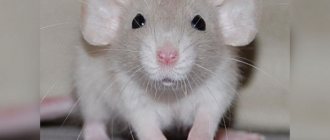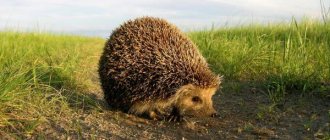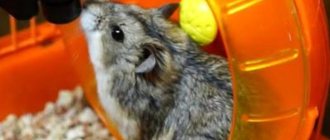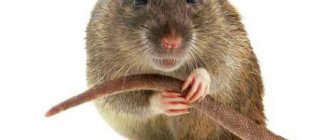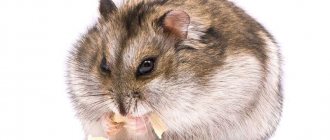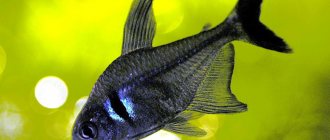The Angora rabbit is unusually fluffy, has soft, delicate fluff and a pretty appearance. This breed includes a whole group of varieties, among which there are dwarf and giant species, animals with different colors, coat lengths and structural features. All downy rabbits require special care for their fur; only in this case will it be suitable for obtaining valuable down from which textiles are made.
Angora rabbit
History of the breed
We should start with the fact that the name of the breed is not accidental. Angora is one of the oldest names of the Turkish capital - modern Ankara.
It is believed that it was from Turkey that French and English sailors brought this unusual animal to their native lands in the mid-18th century, which very quickly spread to many countries of the continent, primarily as a pet. It is known that this animal was preferred by the French nobility and even the royal house.
Very quickly, the unique animal became known in Asian countries, and in Russia they even bred their own species of Angora.
Today, the largest producer of Angora wool is China. It is followed by French, Polish, Hungarian, and Czech down production.
Photo gallery of Angora rabbits:
Characteristics of rabbit fluff
The fur of a downy rabbit consists of 2-8% awn and 92-98% fine downy hair, the length of which can reach 20 cm. It is particularly soft, hypoallergenic, uniform and does not require additional combing, degreasing, washing and drying.
Rabbit down is widely used to make warm clothes. And although it is inferior in strength to the fur of other animals and wears out faster, its thermal insulation characteristics are much higher than those of sheep's wool. Therefore, it is often used for the production of children's clothing.
Interesting! The most valuable is the fluff that is cut from the rump, thighs and back of the rabbit. And the fur from the animal’s abdomen, shoulder blades and chest is of lower quality.
Description and standard
The Angora group includes a large variety of these animals, the main task of which is the production of high-quality fluff. After all, wool with the name “Angora” is known all over the world and is famous for its softness, and the fabric obtained from it is distinguished by its delicate pile.
These rabbits are not intended for slaughter. Wonderful fur is obtained by combing or clipping animals.
Varieties of Angora rabbit are quite different from each other in their parameters. There are industrial types, and decorative ones are also known. Therefore, it is not possible to name one general standard and characteristics
The weight of individuals ranges from 1.7 to 6.5 kg. And the main difference between Angora rabbits and any others is their unusual appearance.
The length of the hair can reach 25 cm or more, and an overgrown pet is just a ball of fluff. Therefore, if you keep such an animal at home, you need to understand that you will have to care for it constantly and this is quite difficult. Although the rabbit of this breed is unusually beautiful.
Among the distinctive features of the Angora, one can also highlight a very small and flattened nose, which is almost impossible to feel under the thick coat. The eyes are also barely visible. Not very long ears most often end in small tassels. The wide body with strong legs has a cylindrical shape.
The animal's fur is very soft and weightless. Actually, the main hair is small and sparse, but it occupies only a tenth of the volume. Everything else is an unusually thin, long and voluminous undercoat.
The colors of Angora rabbits are varied - snow, charcoal, blue, fawn, delicate, light shades predominate.
How to choose a pet
It is better to purchase an Angora rabbit not at the market, but at a nursery or from a private breeder. Documents about vaccinations and breed membership must be provided along with the animal.
It is recommended to buy an animal no earlier than it is 3 months old. By this age, the Angora rabbit completely switches to adult food and acquires all the external characteristics characteristic of the breed.
On a note. Angora rabbits have a very thick undercoat. Because of this, it is difficult to consider body features. In order not to miss serious defects, when purchasing an animal, it is recommended to use the help of a specialist.
When choosing an Angora rabbit, it is advisable to make sure that there is no discharge from the anus, nose, eyes and ears. You also need to pay attention to the following nuances:
- cleanliness and quality of the fur coat;
- down hair length;
- fur color;
- body type;
- behavior.
You should not buy passive, lethargic Angoras with a hunchbacked, rolled or rounded back, bald spots on the skin, thin or matted down, the length of which does not reach 5 cm.
Angora rabbits are funny, shaggy animals with a good-natured and sociable disposition. Non-aggressive and silent animals easily adapt to apartment living and will give a lot of positive emotions to those who are ready to surround them with care and attention.
Mr. Tail recommends: Angora varieties
There are many varieties of Angora. Here are some of them.
English Angoras
Small and very fluffy animals (fluff is located everywhere, even on the face and ears) with a body weight of 2 to 3.5 kg, with an annual down yield of up to 450 g. The colors are different - white, cream, chocolate, charcoal. The fur grows so thickly and abundantly that the animal’s eyes are not even visible.
French Angoras
This variety is most often used on large farms and bred on an industrial scale, as these animals are the easiest to care for. The coat leaves the muzzle, ears and front paws free. Body weight 3.5-4.5 kg, down yield per year is about 550 g. Colors are different.
Until 1939, rabbits from England and France were considered two branches of one breed - Angora Powder. But then they were separated due to too strong functional and morphological differences.
In addition, the fur of the English variety is slightly longer than that of the French variety and covers the entire animal, including the muzzle, ears, and paws.
The French Angora has generally bare ears, and the hair on the front legs and face is very short.
German Angoras
Also good for industrial breeding. These are large animals with exclusively snow-colored fur. The eyes are red. The weight of individuals is from 4 to 5.5 kg, the yield of fluff per year is up to 1.5 kg.
Giant Angoras
The largest variety weighs from 4.5 to 6 kg and is only white. Unlike the Germanic species, the eyes can be either red or cornflower blue. The ears end in small brushes. The yield of down per year from one individual is about 1.2 kg.
German Angoras, French Rams and Flanders participated in the development of the breed. The Giant's eyes are very small, red only in the albino type.
Downy Angoras (White, colored, Soviet)
This variety is a breeding development of Russian scientists. Has many different colors. A distinctive feature is the acclimatization of the species to harsh weather conditions. The animals weigh from 3 to 4.5 kg. The annual volume of fluff from one rabbit is about half a kilogram. There are tassels on the ears.
Bred by crossing Kirov rabbits with French Angora.
Russian Angora Dwarfs
An ornamental variety, distinguished by its low weight (up to 2 kg), a strong small body with a rounded head, a wide head and a variety of colors - white, black, piebald, blue, red, less commonly piebald and bluish-piebald.
Satin Angoras
These animals are also called Satin. The fur has a special gloss and extraordinary softness. It is quite easy to care for animals, since the fluff grows only on the body, on the muzzle, ears, and front legs it is short.
In general, this variety is very reminiscent of the French Angora, because it was obtained by crossing the latter with Satin Rabbits. Weight is 3.5-4 kg, the yield is small - 400 g, but of the highest quality and the wool from this fur is unusually durable.
So far, only single-color colors are recognized, although piebald and ticked ones have already appeared.
Rabbit breeders are busy developing new varieties of Angora. Already known are Chinese, Swiss, Finnish, Korean, St. Lucian, and others.
Undoubtedly, all varieties have the blood and genetic form of their distant relatives - Turkish Angoras, but in order to acclimatize to the local conditions of the breeding countries, the blood of other aboriginal rabbits was mixed into them.
Gutting rabbits
Removing the rabbit skin is done either with a stocking or a cavity. Hang the rabbit by the hind leg with a strong twine. Circular incisions are made into the skin on the hind legs below the hock joint and longitudinal incisions are made, starting from a circular incision along the inside of the thighs to the tail. They pull the skin off the legs, separate it with a circular cut at the anus, pull the skin off the tail vertebrae and, finally, rip off all the skin from the body, turning it inside out like a stocking.
Removing the rabbit skin with a cavity is done like this. Circular skin incisions are made on the hind legs, below the hock joint, then longitudinally, along the inner surface of the thighs to the anus. These incisions are connected on the abdomen, slightly in front of the anus. From the junction of the incisions, a longitudinal incision is made in the middle of the abdomen, chest and neck.
Then circular cuts are made on the front legs below the knees. From the circular incisions, longitudinal incisions are made along the inner surface of the front legs until they connect with a longitudinal incision in the middle of the abdomen. Gradually removing the skin from the hind and front legs, remove it from the entire body. The remaining meat and fat are removed from the skin.
Care and maintenance
Different types of Angora require different maintenance.
When raised for ornamental purposes, Angora rabbits should be kept at home. For their normal life it is necessary:
- A spacious cage, or better yet a decent enclosure, which should have enough space for free movement, as well as a toilet compartment.
- At least twice a week, it is recommended to thoroughly clean the enclosure (cage) and, if necessary, disinfect it. The toilet is cleaned daily.
- It is advisable to equip a small wooden house in the enclosure for the rabbit to rest.
- It is best to use dense and fairly thick hay as bedding in a cage or enclosure. As a last resort, large but soft shavings will do. Sawdust must be excluded - the beautiful fur will get very dirty from it.
- Be sure to have the right drinker (preferably vacuum or nipple) and feeder (preferably hopper type) to prevent spills and spills and keep the precious fur in the best condition.
- It is necessary to carefully monitor humidity (it cannot be high), temperature (optimally +21...+23 °C), and the absence of drafts and direct sunlight.
- Walking every day is necessary, especially if the rabbit is kept in a cage and not in a spacious enclosure.
To prevent your pet Angora from developing health problems, frequent brushing is necessary. After all, animals, carefully licking themselves, absorb enormous amounts of wool. And all rabbits have a rather weak gastrointestinal system.
So, Satin, English, and Down cats need to be combed at least once every three days, and preferably daily. In addition, twice a year, during seasonal molting, the fluff is collected more carefully - constantly combed and plucked. But German, French and Giant Angoras are not only combed regularly, but also completely trimmed with a special clipper once a quarter.
Combing and plucking is done using special slicker brushes. There is another interesting way to free an animal from excess fluff - blowing it with a hairdryer. But the temperature of such a jet should be comfortable for the rabbit, and it is better to accustom it to this procedure from an early age so that the animal does not get scared.
Thus, combing and clipping not only provide an excellent decorative appearance for the rabbit, but also collects valuable wool, and also helps to avoid health problems for the pet.
There is no need to bathe your pets. Moreover, it is dangerous for their health, and it is very difficult to comb and dry such voluminous fluff.
Angoras are very friendly and curious animals, although somewhat shy. When walking around the apartment, they should be carefully monitored so that they do not injure themselves or cause damage to the furnishings and electrical wires.
In order for these animals, which have a genetically programmed nocturnal lifestyle in their memory, not to make noise at night, they need to be well fed and allowed to move in the evening.
It is advisable to keep one Angora rabbit in an enclosure, but if you plan to have a couple of pets, then it is better to purchase them together and from the same litter.
The industrial maintenance of Angoras is not too different from other breeds. In addition, in order to obtain the greatest amount of fluff, it is recommended to keep animals alone and in spacious enclosures. Of course, breeding these pets in pits is strictly prohibited.
In the summer, on farms, Angora rabbits are usually kept in a large enclosure-pen, divided into sections under a common canopy. For the winter, animals need warm closed cages or a large heated room, divided into separate zones.
Grain feed for rabbits
Green herbs, both meadow and sown, as well as hay made from them. Young winter crops, not overgrown oats with vetch, millet, clover, seradella with jper-gel, sainfoin, alfalfa, chicory (leaves and roots), dill, caraway seeds. Among the weeds the rabbit likes: dandelion, wormwood, sage, and wild mountain ash.
Harmful herbs for rabbits: poppy, hemlock, nightshade, datura, foxglove, spurge, lettuce, henbane, wolfberry, bulbous plants, leaves and fruits of stone fruit trees (cherry, plum, etc.). Green herbs are given to the rabbit only fresh, not covered with dew and not withered, i.e. not when they start to wander.
When switching from dry food (hay and grain) to green food, be careful to avoid diarrhea and bloating, especially when switching to clover, alfalfa, and sainfoin. Woody vegetation can sometimes produce branches with leaves of aspen, birch, poplar, acacia, ash and maple.
Oats come first, especially for young rabbits, then barley, which is also good for fattening, wheat, and corn (boiled). Rabbits should not be given a lot of rye, so as not to cause diarrhea and bloating. Legumes include peas and lentils in soaked form. From oilseeds, flaxseed and hemp seed. Rye and wheat bran are fed to rabbits with boiled potatoes or cut beets and rutabaga. The cakes are given little by little as protein-rich food to females and young rabbits.
Fruits and vegetables can be boiled, but are best served raw. Be careful not to leave any scraps that could rot. They become a source of infection. Every morning, leftover food must be removed from the cage. In hot weather, be sure to monitor the water level in the drinking bowl. Due to its massive fur, the Angora is thirsty, so during the warm season special attention is needed for water.
Feeding
The diet of Angora rabbits includes:
- Special industrial feeds.
- Cereals, legumes (except beans).
- Freshly cut, but slightly withered grass. You need to be careful not to get poisonous and harmful plants into it, for example, dope, belladonna, spurge, celandine, buttercup, feather grass.
- Raw and boiled root vegetables, fresh fruits, some vegetables (white cabbage should not be given).
- Hay or haylage. It should be in the enclosure at all times, regardless of the time of year. In winter, hay made from legumes and cereals works well.
- Herbal granules with bone meal.
- Fresh and high-quality drinking water in large quantities.
When feeding Angoras, you must remember that fruits, berries, and vegetables are treats for animals and should not be given more than 2-3 times a week in very small quantities.
Sweets (chocolate, candy, cakes, cookies, etc.), food from the human table, baked goods, canned food, marinades, smoked meats, fatty, meat and dairy products are strictly prohibited in the diet of Angoras, as well as any other rabbits.
General information
Angora rabbits are spectacular representatives of the rabbit family. The main feature is increased fluffiness, the pile is soft and fluffy. Today there are about 55 million individuals. But few people know where and when these animals appeared.
Origin of the Angora rabbit
In France, in 1723, they first learned about rodents with long hair. A little later, sailors from Istanbul began to take them out of the country. This is how the breed began to spread throughout the world. The animals immediately won the love of privileged people and became domesticated. A little later they became a brand of some companies.
The first to realize that good profits could be made from Angora fur were the French. They were the first to create fur products from wool . The fur industry has been popular in the country for several centuries in a row. Napoleon Bonaparte also invested his funds in the promising industry.
Until the middle of the 20th century, France was the only country where down from this breed of rodents was produced on a commercial scale. Over time, China became the global fur production industry. Today, China produces more than 95% of the world's product.
Characteristics of the Angora rabbit
The size of the animal is small , which is why they are also called dwarf. The weight of rodents is small, only 3–4 kg. In some cases it can reach 6 kg. The weight of a newborn rabbit is 500 grams.
Breeding
The lifespan of Angora rabbits can vary from 5 to 12 years. And this largely depends on the lifestyle they lead.
On farms where Angoras are kept for industrial purposes, they are usually culled by the sixth year of life. Female rabbits, who are called upon to give birth to new downy individuals, usually begin to give birth to fewer rabbits in the fourth or fifth year of life.
From six months onwards, females are selected for breeding work. In addition to the size and health of the animal, the quality of the fur and the length of the down play an important role here.
Angora rabbits differ significantly from other breeds in many respects. And the age of puberty is no exception. Only in the first year of life are females allowed to mate. Males mature a little later.
Mating always takes place in the rabbit's territory; here it behaves less aggressively. The mating will be repeated not once or twice, but three or four times. Moreover, it is preferable to mate with several males simultaneously, sequentially and for at least ten days. Mating is stopped only after the female rabbit categorically refuses the rabbit. This indicates that pregnancy has occurred.
The more males take part in matings, the higher the number of rabbits in the litter.
About a month later, birth occurs. During the first litter, more than five rabbits are rarely born. In the second there may be six of them. But Angoras very rarely give birth to more than eight babies.
No more than two pregnancies are allowed per year; with the number of litters, the number of babies born to a female usually increases.
But any female rabbit is given the opportunity to give birth at least twice in her life. If it turns out further that she is not the best mother or produces few rabbits and is not of the best quality, she is transferred to the down herd. Only a third of the females are transferred to the breeding stock.
It is important to provide the Angora with a calm environment during gestation, birth and feeding, provide excellent food and ensure the availability of clean drinking water in sufficient quantities. It has been noted that disturbed mothers can destroy the entire brood.
Felting of wool, formation of tangles
Rabbits of almost all Angora breeds are prone to fur matting and the formation of pellets (mats). In foreign sources this phenomenon is called matting. The reasons for the formation of tangles on one side are long, soft fur. On the other hand, a thorough study of the structure of the fur made it possible to believe that in some breeds of downy breeds of rabbits, the hairs have a tendency to section and bifurcate the fur. Perhaps only the German downy angora is considered resistant to wool matting. Under the tangles, the thermoregulation of the skin is disrupted; allergic and atopic dermatitis and fleas can develop. It is impossible to eliminate the formation of tangles with medications; the only option is regular combing of the skin using a furminator, a special comb, or periodic haircuts. The haircut is carried out under general anesthesia, with the help of inhalation anesthesia, or you can get used to cutting hair using a special electric clipper, reminiscent of a hairdresser's haircut machine. The use of sedatives does not have a good effect, the rabbit only becomes more nervous.
Advantages and disadvantages
Angora rabbits are a source of valuable wool, but this breed has a lot of negative qualities, and only an experienced rabbit breeder can farm them.
Even as a pet, this is, although a beautiful, but very complex animal. And you need to think a hundred times before you take on keeping, let alone breeding, this breed.
Advantages of Angora rabbits:
- Obtaining valuable fluff.
- Beautiful appearance, the possibility of decorative keeping, in which Angoras show themselves as quiet pets.
- Unusual and very beautiful colors of some varieties, which make it possible to obtain wool that does not require dyeing.
This breed has more disadvantages than advantages:
- Small size and weight.
- Relatively small amounts of fluff per year of keeping - from 400 to 1500 grams.
- There is practically no possibility of obtaining meat through forced slaughter.
- Weak immune system.
- Fearfulness, exposure to stress.
- Possibility of allergy to animal down in household members.
Appraisal
Grading of rabbits is an assessment of their breeding qualities. It is carried out in accordance with the requirements of OST 10114-88. The number of rabbits on a farm or farm is divided into breeding and use (commodity) parts. The breeding core must contain at least 30% of the main herd.
Rabbits are graded, i.e. assessed for compliance with the breed by weight, build, fur density and its uniformity, hair color. Based on the results of the breeding assessment, classes are assigned: elite, I, II or III.
Correspondence of rabbits to classes.
Crossing rabbits of downy breeds with meat or meat-skin rabbits is unacceptable.
Possibility of training and training
Angoras are very shy animals, but far from stupid. And with enough attention to them from the owner, they are able to remember their nickname and gain some training skills.
To do this, use the excellent sense of smell of rabbits. They quickly get used to the owner's smell and stop being afraid. Various treats are used as encouragement.
Angora dogs can learn to carry out simple commands very quickly, but we must remember that the main thing here is patience; you should absolutely not raise your voice to your pets. Before picking up a rabbit, you should talk to it calmly and affectionately, and, when lifting it from the floor by the scruff of the neck, hold it with your other hand under its hind legs.
Angora rabbits are very peaceful and friendly. They get along quite easily with other pets if they behave non-aggressively - cats, hamsters, parrots.
Angoras have a complex relationship with dogs. They can only become friends if they take a puppy and a baby rabbit into the house at the same time. In this case, they can feel like relatives, members of the same pack. But dogs of hunting breeds are absolutely not suitable here.
When well cared for as pets, Angoras live for about 5-7 years.
Diseases and prevention
It is very important that in relation to Angora rabbits, the deworming schedule is strictly observed and the vaccination schedule is followed, since this breed has low immunity. But besides the known viral infections, other pathologies may also occur. Therefore, in case of any incomprehensible symptoms, for example, discharge from the nose, eyes, genitals, strange behavior, lethargy and lethargy, you must immediately contact a veterinary clinic. Most often, in addition to viral ones, the following diseases are observed in rabbits:
- Non-contagious. They arise as a result of violation of the conditions of detention. Most often these are colds, acute respiratory infections, pneumonia, gastrointestinal disorders. First of all, you should restore all care settings. If this does not help, contact your veterinarian immediately.
- Infectious in nature. These are staphylococcal lesions, contagious dermatitis, rhinitis, conjunctivitis and others. Most often, hydrogen peroxide, Baytril, Levomekol, Furacilin, and penicillin group drugs help.
- Invasive nature. These are various coccidiosis, scabies, fascioliasis. In addition to the last disease, which is incurable in rabbits, sulfonamides, Akrodex, Hexalin, and Hexatalp can help.
Rules for choosing good individuals
When choosing rabbits, you should adhere to the following recommendations:
- study the rules of care, maintenance and breeding of the breed;
- purchase individuals only from proven specialized farms or from breeders with a good reputation;
- Before purchasing, conduct a visual inspection of the body, head, paws, ears and condition of the coat. A healthy individual should have shiny eyes, straight paws, even fur, a rounded but not hunchbacked back;
- check the bite: the upper incisors should extend beyond the lower ones. An incorrect bite will cause serious problems during maintenance.
Important: experts recommend purchasing active and playful rabbits. It is better to discard sedentary and lethargic individuals, as they may have health problems.
Signs of culling
The main signs of rabbit culling include:
- narrow chest;
- poorly defined muscles;
- arched or too concave back;
- skin falling away from the body;
- flaccid, hanging belly;
- bone poverty;
- rough head;
- the presence of all kinds of thickenings;
- not typical color;
- Ears are too thin and droopy.
Do you want to get a fluffy bunny for breeding?
All Angoras require careful grooming.
Signs of purebredness
The purity of the animal is evidenced by:
- lively temperament;
- wide chest;
- elastic skin with shiny hair;
- correct physique.
